8 Iron Rich Foods For People With Iron Deficiency

Iron is one of the most essential nutrients for optimal performance of your body. The reason is pretty simple: the molecule hemoglobin that carries oxygen all over the body contains iron atoms attached to it. Besides, iron is an integral part of several other proteins and enzymes. It is essential for the immune system and it enables certain pathways of detoxification in your body.
So having low iron levels is not a good thing. One of the direct consequences is anemia. Check out this post for some juicer recipes about anemia. Iron deficiency symptoms include fatigue, headache low blood pressure, brittle nails and hair, disturbed sleep, and abdominal pain. Iron deficiency is a common problem for children and women between 15 and 50 years old who lose blood via menstruation.
Anemia can be diagnosed easily, but you should try to find the true cause of it before trying iron supplements. Because having too much iron is also not a good thing, and if fact it can be much worse.
Overloading with iron can bring a lot of problems to your body because there are no good mechanisms of iron elimination. Excess iron can oxidize tissues and produce considerable damage on cellular level. This is especially problematic when it comes to the inner lining of the blood vessels, which can lead to cardiovascular diseases.
As it is the case with other trace elements in your body (iodine, manganese), having a proper balance of iron is of vital importance.
Table of Contents
- 1 How to Test For Iron: Ferritin Screen
- 2 Heme vs Non-Heme Iron
- 3 Iron Supplements?
- 4 Iron Rich Foods
- 5 Squash and Pumpkin Seeds (Non-heme)
- 6 Beans and Lentils (Non-heme)
- 7 Quinoa (Non-heme)
- 8 Dark Leafy Vegetables (Non-heme)
- 9 Raw Cocoa Powder (Non-heme)
- 10 Other Non-Hema Iron Foods include:
- 11 Interesting Facts About Iron Absorption
- 12 Related Video: Oxygen Transport – Hemoglobin
- 13 Related Posts
How to Test For Iron: Ferritin Screen
Serum ferritin is a simple blood test you can do to test your iron levels. Ferritin is a molecule that carries iron. If there’s too much of it, your iron levels are too high, and the other way around, small concentrations of plasma ferritin is an indication of iron deficiency.
The normal ferritin levels are between 18 and 270 ng/ml for men, 18-160 ng/ml for women, and 7-140 ng/ml for children.
If ferritin is below 18, you are iron deficient, and above the upper limit, there’s too much iron in your body.
As far as the RDA for iron (recommended daily allowance) goes, the dosage is10 mg for men and 15 mg for women. Pregnant women need about 30 mg of iron per day.
Heme vs Non-Heme Iron
If you have too little iron, two dietary sources of iron are basically heme and non-heme iron.
Heme iron is absorbed much better. Non-heme iron is found in plant foods, especially in veggies, grains, beans, nuts, and fruits. Dairy and eggs also have non-heme iron. Non-heme iron is not very well absorbed. That’s the reason why people on a vegetarian or vegan diet are more at risk of developing iron deficiency and anemia than people who consume animal proteins.
Iron Supplements?
If you are vegetarian, plant based sources are not your best option because of the non-heme type of iron. So, the other option for vegetarians (besides plant foods rich in iron) is to take iron supplements. Look for carbonyl iron, not ferrous sulfate. Ferrous sulfate, as an inorganic form of iron, may cause acute overdosing if taken in larger quantities.
Make sure never to take iron supplements if you have iron overload (hemachromatosis), hemosiderosis, or hemolytic anemia.
Iron Rich Foods
If you have low iron levels, you can use dietary sources of iron. Here are the best foods rich in iron from both the heme and non heme type.
Squash and Pumpkin Seeds (Non-heme)
Pumpkin seeds contain 15 mg of iron in 100 g of seeds. If you are going to consume pumpkin seeds, eat them raw for maximum health benefit. But this is a plant source, so the bio-availability might not be that great.
Beans and Lentils (Non-heme)
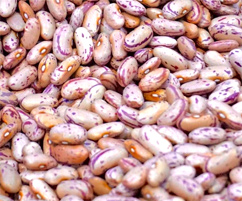 This plant source of non-heme iron has about 4 mg of iron per 100 grams of beans. If you can digest beans and lentils without too much trouble, they are worth considering. Especially black, white, pinot, and chickpeas beans. As an added benefit, beans contain high levels of molybdenum, which help the iron absorption. There is plenty of insoluble fiber too, which is great for improving digestion and weight loss.
This plant source of non-heme iron has about 4 mg of iron per 100 grams of beans. If you can digest beans and lentils without too much trouble, they are worth considering. Especially black, white, pinot, and chickpeas beans. As an added benefit, beans contain high levels of molybdenum, which help the iron absorption. There is plenty of insoluble fiber too, which is great for improving digestion and weight loss.
Quinoa (Non-heme)
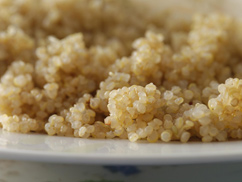 Another natural source of iron is Quinoa. It contains about 1.5 mg of iron per 100 grams of grains. Barley, millet, and buckwheat also contain sizable amounts of iron.
Another natural source of iron is Quinoa. It contains about 1.5 mg of iron per 100 grams of grains. Barley, millet, and buckwheat also contain sizable amounts of iron.
Dark Leafy Vegetables (Non-heme)
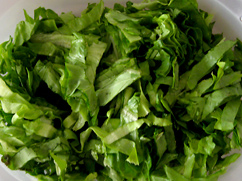 With as much as 4 mg of iron per 100 grams of veggies, cooked spinach is one of the best plant sources. Cooking spinach and discarding the water afterward is beneficial to minimize the amount of ingested oxalic acid, but you can also add some fresh spinach leaves to your smoothies or juices from time to time. Other greens include, for example collard green, which are packed with vitamin A, vitamin C, and calcium.
With as much as 4 mg of iron per 100 grams of veggies, cooked spinach is one of the best plant sources. Cooking spinach and discarding the water afterward is beneficial to minimize the amount of ingested oxalic acid, but you can also add some fresh spinach leaves to your smoothies or juices from time to time. Other greens include, for example collard green, which are packed with vitamin A, vitamin C, and calcium.
Raw Cocoa Powder (Non-heme)
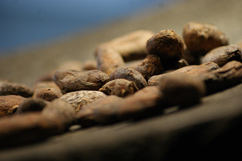 Dark Chocolate and cocoa powder are a great source of dietary iron. There is stunning 17 mg per 100 grams of cocoa. Make sure the powder is raw to maximize the health impact. Your dark chocolate should at least be with 95 percent of cocoa in it.
Dark Chocolate and cocoa powder are a great source of dietary iron. There is stunning 17 mg per 100 grams of cocoa. Make sure the powder is raw to maximize the health impact. Your dark chocolate should at least be with 95 percent of cocoa in it.
Other Non-Hema Iron Foods include:
- tofu,
- tempeh,
- artichokes,
- molasse,
- dried apricots,
- prunes,
- raisins,
- sweet potato,
- broccoli,
- kale,
- tomato,
- peas,
- strawberries,
- sunflower seeds,
- asparagus,
- beets,
- turnip greens,
- parsley,
- dates,
- bananas,
- olives
Interesting Facts About Iron Absorption
Vitamin C (ascorbic acid) increases iron absorption in the body. About 1 gram of Vitamin C increases the absorption of iron from a food by more than 4 times.
Beta carotene is also believed to improve iron absorption. The best source of beta carotene for this purpose are whole foods, not supplemental forms.
Medications for reducing the amount of stomach acid can inhibit the absorption of iron.
Tea and coffee, because of their biologically active poly-phenols, can also impair iron absorption by binding to this metal.
High calcium intake, for example calcium from milk and dairy, can inhibit the absorption of both heme and non-heme types of iron.
Phytic acid from soy products can drastically reduce the iron bio-availability and reduce its absorption by as much as 50 percent. Phytates are also present in nuts, sesame, lentils, peas, and whole grains.
Related Video: Oxygen Transport – Hemoglobin

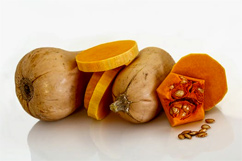
Leave a comment